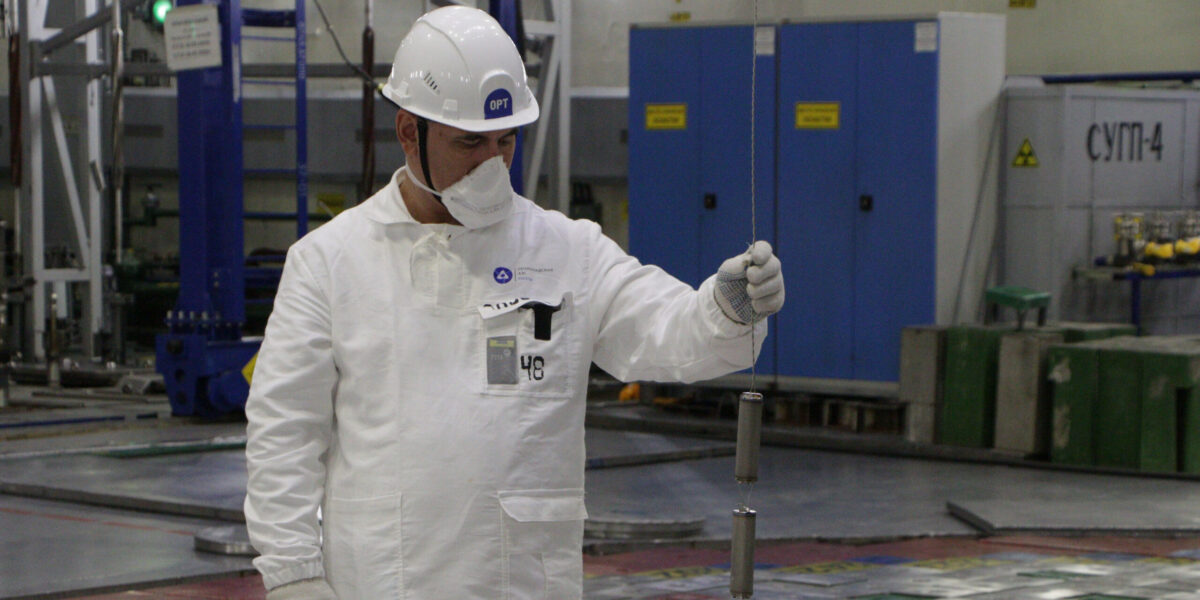A pilot batch of one of the most popular medical isotopes in the world produced at the Leningrad NPP was positively evaluated by specialists from V.G. Khlopin Radium Institute. This scientific institute is one of the leading Russian manufacturers of radiopharmaceuticals. According to the expert report, the produced lutetium-177 fully meets the requirements for the production of radiopharmaceuticals based on this isotope.
The target product, 177Lu, is suitable for further medical use, while the starting material is usable in fulfilling orders. The positive evaluation of a pilot batch of lutetium-177 makes possible its commercial production.
Lutetium-177 is a new isotope for the Leningrad Nuclear Power Plant. This isotope has expanded the range of isotopes produced in the reactors of the Leningrad NPP, which includes molybdenum-99 (activation), iodine-125, iodine-131.

“The Leningrad NPP can now produce medical isotopes in four irradiation channels – at the 3rd and 4th power units, two channels at each. Since 2021, the channels have been repurposed including technical and organizational measures taken to produce medical isotopes. This allows us to satisfy all the needs of customers for isotope production,” commented Alexey Kondratyev, Head of the Radiation Technology Department of the Leningrad NPP.
Lutetium-177 demonstrates high effectiveness in the diagnosis and targeted therapy of a number of oncological diseases. The unique properties of the isotope make it usable even at the advanced stages with metastases or inoperable tumors.
As you may remember, the Leningrad NPP produced the first pilot batch of another new medical isotope, samarium-153, in May 2024, which is also used in the treatment of cancer. Following the Leningrad NPP, Rosatom plans to begin producing medical isotopes at the Kursk and Smolensk nuclear power plants.
Today, Rosatom considers the development of radiation technologies as one of its strategic goals. According to business experts, the future market for the development of such technologies is comparable to the nuclear energy market as it includes modern medical diagnostics, transport security systems, new means of water and air purification, microelectronics, light industry, metallurgy and many other areas.
Reference
Currently, Rosenergoatom (Rosatom’s Electric Power Division) is a key producer of medical radioisotopes for the Russian market. In addition, the generating company produces sterilization cobalt-60 at the nuclear power reactors meeting about 30% of the world's needs in this isotope.
The Leningrad NPP (Sosnovy Bor, Leningrad region) is one of the largest nuclear power plants in Russia with an installed capacity of 4400 MW. The plant is situated on the shores of the Gulf of Finland. It has two units with RBMK-1000 and two VVER-1200 units in operation. Power units 1 and 2 with RBMK-1000 were shut down for decommissioning after 45 years of service. They were replaced with two VVER-1200 units in 2018 and 2021 respectively. Their design service life is 60 years, an extension for another 20 years being possible. Two more new power units (7 and 8 with VVER-1200) are planned to be commissioned in 2030 and 2032, respectively. They will replace the capacities of power units 3 and 4 with RBMK-1000. The annual production of each VVER-1200 power unit will be more than 8.5 billion kWh of electricity. For more than 20 years, the plant has been producing isotopes that are used throughout the world. This is the first isotope producing domestic NPP.





